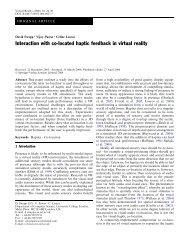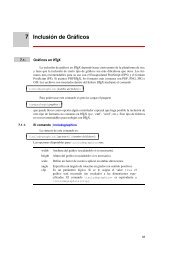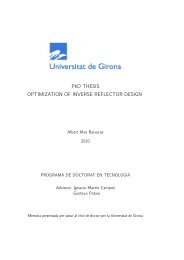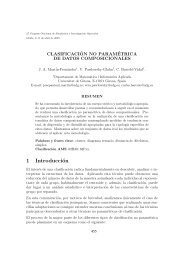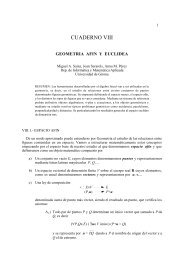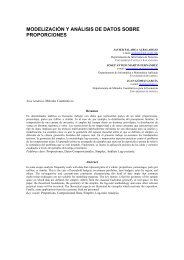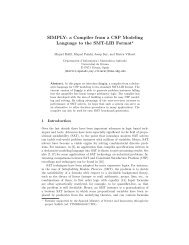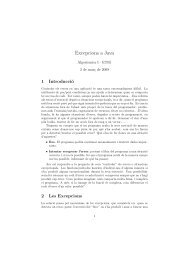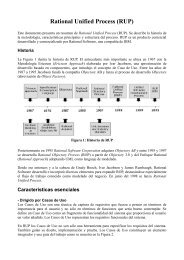Thomas, C.W. and Aitchison, J.
Thomas, C.W. and Aitchison, J.
Thomas, C.W. and Aitchison, J.
Create successful ePaper yourself
Turn your PDF publications into a flip-book with our unique Google optimized e-Paper software.
5course, exactly what we obtain if we assumed that there was a constant perturbation atwork.First we note a trivial point, namely that the there is near equality pf the Ca <strong>and</strong> Loicomponents. This is simply recording the stability of the (Ca, Loi) subcomposition, inother words the fact that Loi will always match the Ca component.Second, since we saw the importance of the (Fe, Mg, Ca) subcomposition indiscriminating between the two liimestones we note the considerable differences inthe perturbation components of these oxides, namely [0.0394 0.2823 0.1578],showing how in the change from Inchrory to Dufftown Fe has given way substantiallyto Mg <strong>and</strong> less so to Ca. The perturbation components of all the other oxides rxceptfrom Mn are reasonable constant indicating stability of the associatedsubcomposition. The question then arises: is there some geological explanation fo therelative increase in Mn?6. Are there any helpful graphical representations of the variability in thelimestones?We have already seen the use of a logratio scattergram to demonstrate the separationbetween Duffinch <strong>and</strong> Inchrory limestones. There is hopefully no need to repeat thewarnings of Chayes <strong>and</strong> others on the misuse of such other graphical tools such asHarker diagrams. We have also seen the use of a centering perturbation to improvethe use of a ternary diagram to show the relevance of the carbonate (Fe, Mg, Ca)subcomposition as a discriminator between the Duffinch <strong>and</strong> Inchrory.limestones.The main advance in other graphical descriptions of compositional variability hasbeen the extension of the familiar <strong>and</strong> powerful unconstrained biplot technique tocompositional data; see <strong>Aitchison</strong> (1990b, 1997, 2001) <strong>and</strong> <strong>Aitchison</strong> <strong>and</strong> Greenacre(2002) for details. We are currently exploring these <strong>and</strong> will present an example atCODAWORK03.7. Is it possible to order specimens within the limestone suites?If it is assumed that there is a process of change from Inchrory-ness to Dufftown-nesscan we somehow order the limestones within this process there are simplecompositional more or less equivalent ways of doing this. From the discriminationanalysis we can compute for each limestone the probability of allocation to theInchrory set <strong>and</strong> arrange these probabilities in decreasing order. Or we use theprincipal logcontrast component (<strong>Aitchison</strong>, 1986, Section 8.3) or equivalently by useof the first coefficients in a singular value decomposition (<strong>Aitchison</strong>, 2003). Withsuch techniques it is also possible to interpret the possible position of other non-Inchrory, non Duffinch limestones with the Inchrory to Duffinch process. We do notreport details here; for some earlier results, see <strong>Thomas</strong> <strong>and</strong> <strong>Aitchison</strong> (1998).



